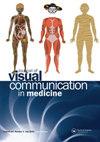Glioblastoma: The Weed of the Brain.
IF 0.7
Q4 RADIOLOGY, NUCLEAR MEDICINE & MEDICAL IMAGING
Journal of Visual Communication in Medicine
Pub Date : 2022-04-01
Epub Date: 2022-01-11
DOI:10.1080/17453054.2021.2010521
引用次数: 0
Abstract
In the changing landscape of medicine, cancer comes as a priority. 11,000 people are diagnosed with a brain tumour each year in the United Kingdom (NHS, 2020); however, only 1% of funding is attributed (Scott, 2021). ‘Glioblastoma: The Weed of the Brain’ is a research project that aims to engage audiences on Glioblastoma Multiforme (GBM), currently recognised as the most aggressive brain tumour in medical literature (Duma, 2016). The tumour forms in the astrocyte cells that reside within the glial cells, found in the brain and spinal cord (Cancer research UK, n.d.). The tumour insidiously spreads through the white matter pathways within the brain (Duma, 2016) in a process known as angiogenesis; in which tumour cells invade healthy brain tissue and gain oxygen from blood vessel to increase its spread (Grisham, 2014). This growth pattern attests to the tumours’ complexity but also why no treatment has led to a successful prognosis. Current treatments have only sought to prolong the life expectancy from around 12 to 18 months (Methodist, 2019); through surgery, chemotherapy and radiation (Brem & Abdullah, 2017). These methods have proven harmful to brain cells and indicate a lack of acknowledgement for other methods, such as botany in medicine.胶质母细胞瘤:大脑的杂草。
本文章由计算机程序翻译,如有差异,请以英文原文为准。
求助全文
约1分钟内获得全文
求助全文
来源期刊

Journal of Visual Communication in Medicine
RADIOLOGY, NUCLEAR MEDICINE & MEDICAL IMAGING-
CiteScore
1.50
自引率
14.30%
发文量
34
期刊介绍:
The Journal is a quarterly, international, peer-reviewed journal that acts as a vehicle for the interchange of information and ideas in the production, manipulation, storage and transport of images for medical education, records and research.
 求助内容:
求助内容: 应助结果提醒方式:
应助结果提醒方式:


